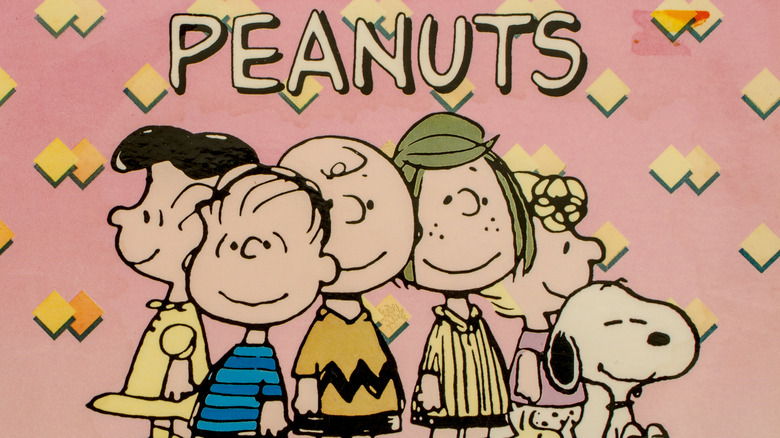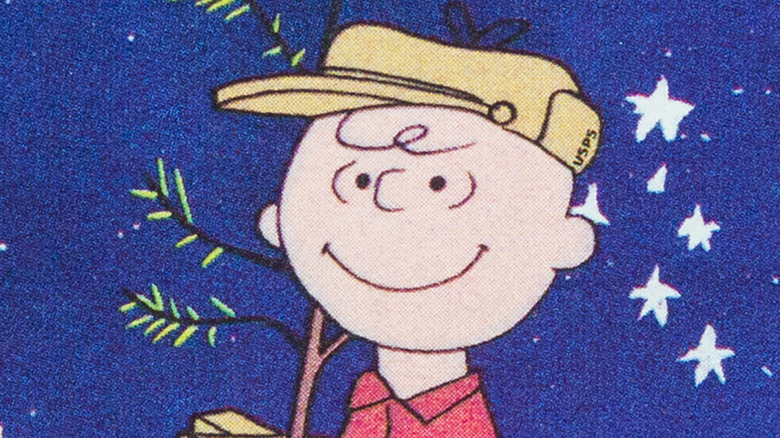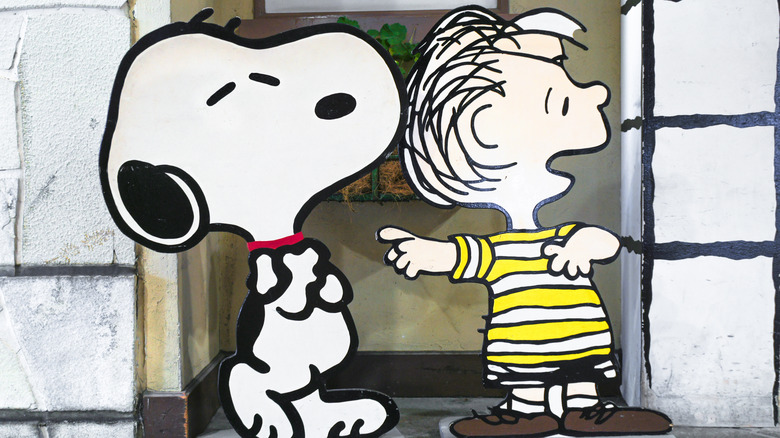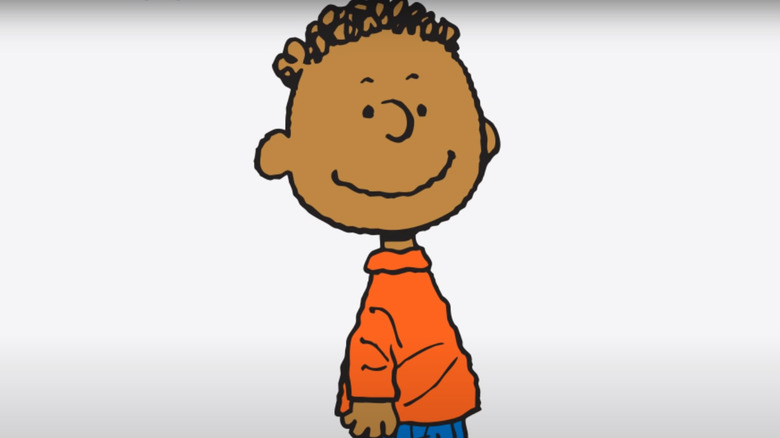The Real-Life Inspirations Behind These Peanuts Characters
One of the most popular comic strips of all time, according to Watch Mojo, is Charles Schulz' "Peanuts," which debuted in 1950. Despite the relative simplicity of its presentation, Charlie Brown and his friends, human and animal, managed to entertain while at the same time making profound observations. Further, not unlike a handful of other comic strips, "Garfield" in particular, the "Peanuts" franchise moved from just ink on paper and, later, merchandise, to include TV specials, movies, and even theme-park tie-ins.
Further, it's provided a few cultural touchstones that persist to this day, such as the recurring bit where Lucy holds a football for Charlie to kick, only to yank it away at the last second, causing Charlie to fall, acting as a metaphor for doing the same thing over and over again and expecting a different result. Since "Peanuts" involves human children (and intellectual animals) as opposed to, say, animated cats, it should come as no surprise that many of the characters were based on real people (or animals) in Charles Schulz' life.
Charlie Brown was Charles Schulz' coworker
You could be forgiven for concluding that since Charles Schulz and Charlie Brown share the same first name, the latter is named for the former. But you'd be wrong, according to Twin Cities Pioneer Press. Rather, Schulz, after having served in the Army in World War II, had taken a job at a Minneapolis Art Instruction school, and there he met a colleague named Charlie Brown. Back in 2015, Brown explained that when Schulz had told him he (Schulz) was going to name his comic strip's main character after him, Brown wanted to see what he looked like. He was rather disappointed on seeing himself rendered as a chubby, bald, and morose kid. "Can't you make him look a little more like Steve Canyon or Superman?," Brown asked.
Being the real Charlie Brown seems to have been an inconvenience for the Minneapolis artist at least once in his life: he said that a police officer once accused him of giving him "sass" when he told him his name was Charlie Brown, although his driver's license sorted the matter out.
Snoopy was originally going to be Spike
Charlie Brown's pet dog, Snoopy, is at once aloof and borderline disinterested in his owner (calling him "that round-headed kid"), but also fiercely loyal to his friend, and won't tolerate any disrespect for him. As noted in the book, "Around the World in 45 Years: Charlie Brown's Anniversary Celebration," Snoopy was loosely based on a dog named Spike, whom Schulz owned while he was a teenager.
When the artist was developing his comic strip, the dog's name was going to be Sniffy, according to History, but one day, with the launch of the strip in sight, Schulz passed a newsstand and noticed a comic magazine that featured a dog named Sniffy, and Schulz needed a Plan B. He remembered that his own mother had suggested "Snoopy," and a pop culture icon was born. Spike, for whatever it's worth, did make it into the strip as a minor recurring character, specifically that of Snoopy's brother who lives in the desert.
Franklin updated the strip for the times
In 1968, nearly two decades after "Peanuts" debuted, Schulz brought in the strip's first-ever character of color, a Black boy named Franklin. According to The New York Times, that decision was made following the assassination of Dr. Martin Luther King, Jr., after which an LA woman named Harriet Glickman wrote to Schulz asking him to include a Black character in the strip. Schulz wrote back saying that he'd been thinking about it but wanted to do so in a way that was respectful to the Black community. Eventually, Franklin emerged, and in another nod to the social and political climate of the day, came with a backstory that his father had served in the Vietnam War, The New York Times reported.
Another late addition to the strip occurred about the same time: according to History, Snoopy's bird friend, Woodstock, had been around for a couple of years in the strip prior to 1969, although nameless. After the seminal music festival of the same name in that year, the bird was named "Woodstock."



